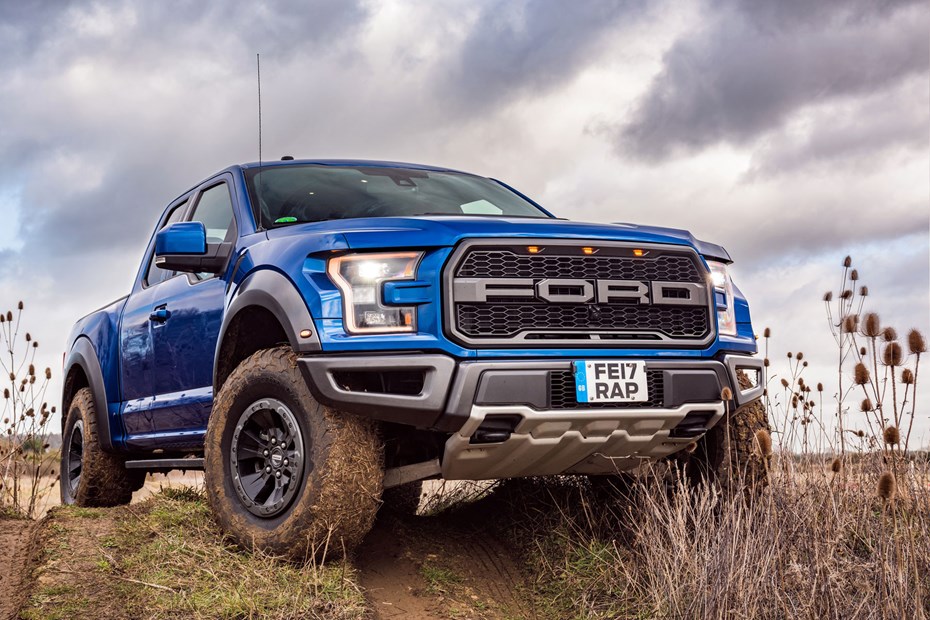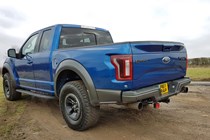Here’s something you don’t see every day: it’s a Ford F-150 Raptor pickup truck, which we’ve been lucky enough to drive right here in Blighty.
Why lucky? Two reasons.
Firstly, the Raptor is the high-performance version of the all-American Ford F-150, and neither this, nor its more ordinary brother trucks are officially sold in the UK (though you can get them through specialist importers, such as Clive Sutton). Ford has brought this one over to our side of the pond for a bit of fun.
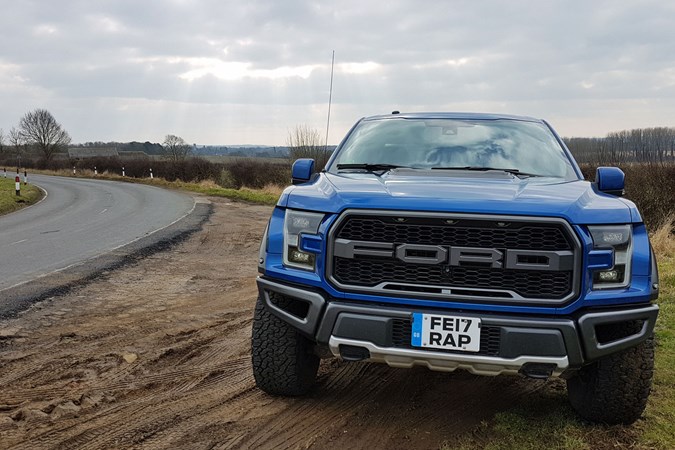
Secondly, when we say ‘high-performance’ we really mean it. Not only is this thing roughly the size of a house – it makes its distant Ford Ranger cousin look tiny – hiding behind that bluff FORD grille is a 3.5-litre twin-turbo EcoBoost V6 petrol engine that produces 450hp and 691Nm of torque. Which makes it comfortably the fastest, most-powerful light commercial vehicle we’ve ever driven.
But there’s more to the Raptor than simple power. Built to be the closest you can get to a factory-made Baja racing truck, it’s this vehicle’s extreme off-road capability that really makes it special.
How fast is the Ford F-150 Raptor?
If you’re unfamiliar with the American car market (which frankly is most of us, we should think), you might be surprised to learn that Ford doesn’t provide any official performance figures.
However, the common consensus is that this colossal pickup can go 0-60mph in around 5.3 seconds and has a top speed around 140mph.
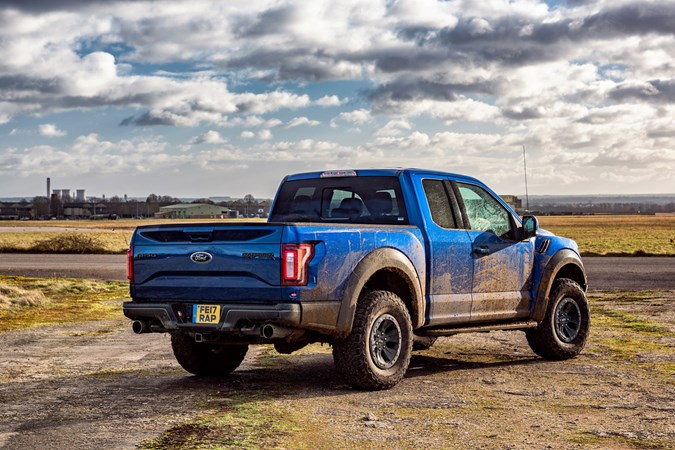
We have no reason to doubt this. That EcoBoost V6 engine is closely related to the motor used by the latest Ford GT supercar and is an immensely impressive piece of work.
Sounding more potent than outright exciting, you need to keep a close eye on the speedo here or you’ll find yourself going far faster than you were probably expecting.
What’s the Ford F-150 Raptor like to drive?
One of the reasons the reading on the speedo tends to come as a surprise is that the sheer size of the Raptor seems to mask how quickly it’s travelling.
You sit so high that you’re actually looking down on most road signs, while at nearly 2.5m wide you’re constantly in danger of taking up more than your fair share of the road on a typical country B-road – and the Raptor is officially only made in left-hand drive, which is likely to take a bit of getting used to. Clive Sutton does offer a right-hand drive conversion, but it is understandably expensive.
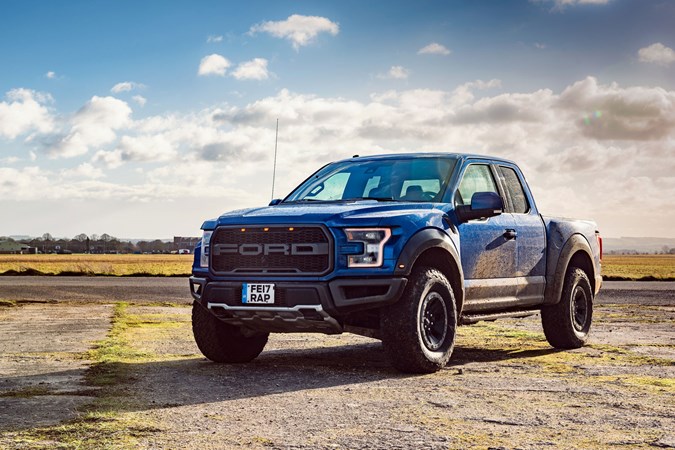
If you can cope with the width, the 5.6m length shouldn’t trouble you too much. But at a smidge over 2.5 tonnes, the Raptor’s weight certainly does come into play – the mighty engine is paired with mighty brakes, but you do still need to consider the amount of momentum your velocity is producing. Slowing down for corners is not something to be taken lightly.
With all-terrain tyres and massively long-travel suspension, the handling on tarmac can be rather lively. The Raptor prefers a firm hand rather than a timid approach, but even then you need to be on your toes – especially when you’re in the default rear-wheel drive mode. Loads of fun when you’ve got the space; just a touch unnerving when the roads are tight and twisty, and there’s lots of traffic.
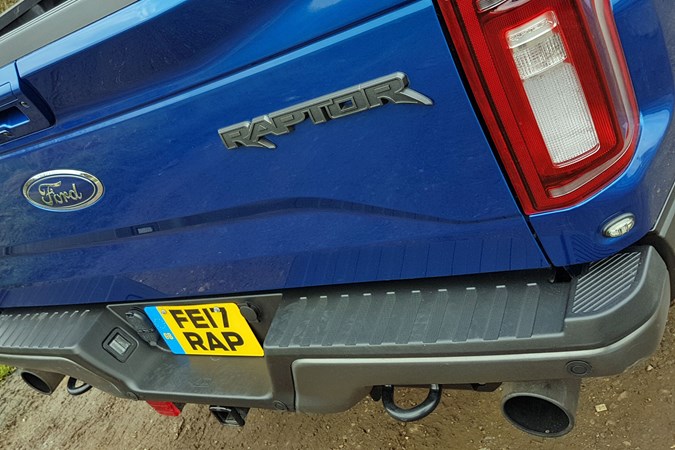
The stability control system is judicious and unflinching, however, and switching to four-wheel drive may give you the necessary additional reassurance. It also adds a little weight to the steering, which you might feel is otherwise missing, regardless of which of three available steering modes you’ve got activated.
The four-wheel drive is very clever, too, combining an automatic setting, which varies torque front and rear accordingly, with a proper locking system with both high and low ratios.
Add to this the standard-fit 10-speed automatic gearbox, and you’ll understand when we say for all of its brute force ability, this is also a very sophisticated machine. The gearbox is at its best under manual control using the paddleshifters on the steering wheel – strangely, the automatically controlled gear changes can be very abrupt.
What’s the Ford F-150 Raptor like off-road?
The Raptor isn’t built for the kind of gentle, considered green-laning you might associate with the modest off-road capability of the UK’s regular pickup market. It is instead designed to be driven across the scenery – particularly desert scenery – as quickly as possible.
As such, it has a number of very specific modifications versus the rest of the F-150 range.
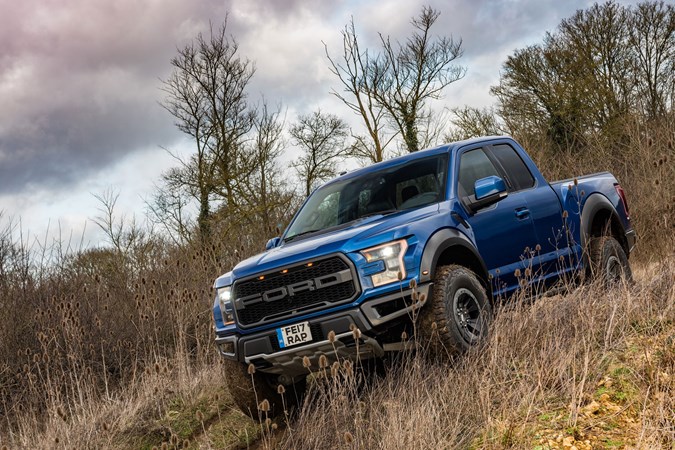
These include bespoke bodywork that is six inches wider – though still made from the same ‘military grade’ aluminium – matched to new front and rear bumpers that deliver much greater clearance over off-road obstacles, and a unique high-strength steel box-frame chassis, to better cope with the inevitable punishment it’s going to receive.
But the real star of the show is the suspension. The Raptor’s dedicated design delivers 13.0 inches of front suspension travel and 13.9 inches at the rear, using Fox Racing shock absorbers with no less than nine bypass valves inside – a combo that’s intended to excel when thrashed over the most extreme terrain and supported by a selection of six driving modes, including Baja for high-speed off-roading.
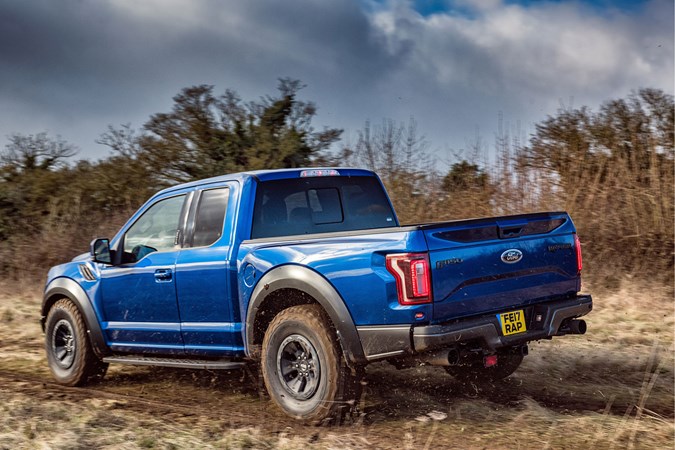
We don’t have much desert around Peterborough, but the Raptor simply smothered every bump and obstacle we could find to throw at it.
Further proof of its toughness comes from Ford, which entered a pair of basically stock Raptors into the 2016 Baja 1000 race. One of them finished third in class after 35 hours and 59 minutes of off-road racing, and was then driven back to the workshop 400 miles away…
Is the Ford F-150 any good as a working pickup?
Not if you want to carry anything heavy. The maximum payload for the SuperCab version that we’ve driven is just 454kg, while the larger SuperCrew only increases that to 544kg – a far cry from the 1,000kg+ most UK pickups can manage.
Both versions get the same load area dimensions, and these are at least sizeable, being 1,704mm long with 1,285mm between the rear wheelarches. The side walls are 544mm tall.
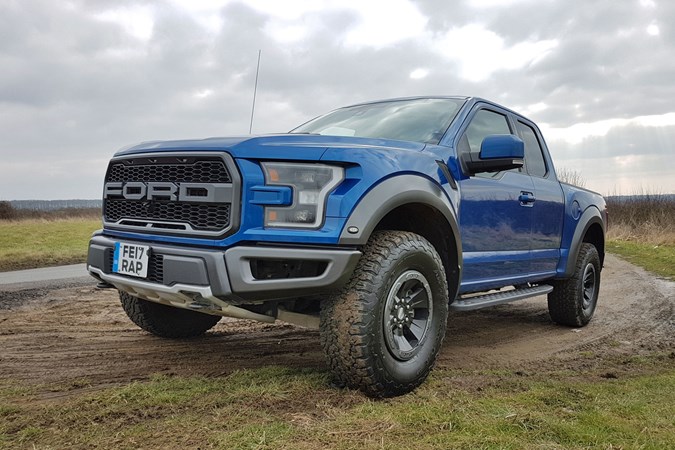
Things get better when it comes to towing, as the SuperCrew model can officially haul over 3.6 tonnes. The SuperCab is limited to 2.7 tonnes.
You’ll probably be put off further by the fuel economy, which translates from the American figures to a claim of 19.0mpg at best. And you’ll get no factory warranty in the UK either.
This is not a working truck. It’s a plaything.
How much does it cost to get a Ford F-150 Raptor in the UK?
Still want one? Then the going rate for a fresh import from the USA seems to be around £78,000 (including VAT) at the time of writing – sounds a lot when you consider they have a list price of $50,000 back home, which is around £36,000.
But that list price is subject to dealer markup in States (they tend to go for $10-20,000 more), and you’ve got to factor in the VAT and the import costs, and that the importer wants to make enough of a profit to stay in business.
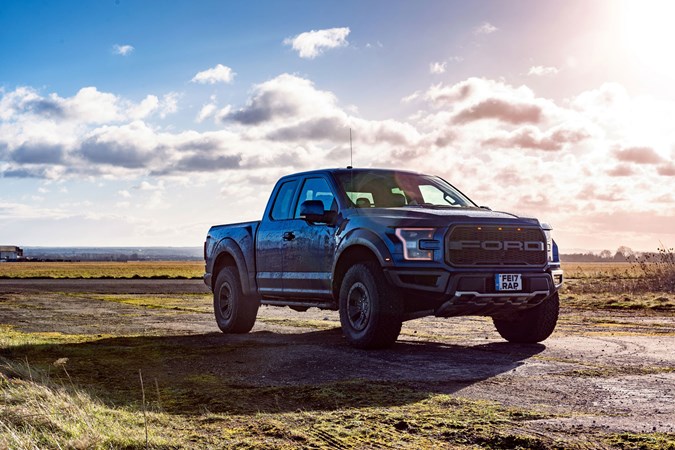
Standard equipment is reasonable rather than overly generous, but the Raptor is nicely finished inside for a US-market vehicle. More to the point, it will be exceptionally rare over here, and has extraordinary all-round ability – so no doubt to most actual buyers, it will be worth every penny.
Ford F-150 Raptor UK verdict
Utterly bonkers – but we can’t help wanting one. The Ford F-150 Raptor is perhaps the ultimate pickup truck, and for some that will be all the excuse they need to make a buying decision.
It’s not difficult to drive, but on UK roads it will always be awkward. Fortunately, if there was ever a vehicle where using a road was basically optional the Raptor is it. A silly, yet hugely beguiling machine.
Also read:
>> Ford Ranger Raptor – full details on new high-performance pickup truck
>> Mercedes X-Class vs VW Amarok twin-test review
>> Ford F-150 Raptor high-performance pickup on sale in the UK for £78k
>> UK-built diesel to power iconic Ford F-150 pickup truck
>> Ford Ranger VR46 review – the pickup designed by Valentino Rossi,
Just so you know, we may receive a commission or other compensation from the links on this website - read why you should trust us.


